- Home
- Francis Spufford
True Stories
True Stories Read online
TRUE STORIES & OTHER ESSAYS
Copyright © 2017 Francis Spufford
All rights reserved. This book may not be reproduced in whole or in part, in any form (beyond that copying permitted by Sections 107 and 108 of the U.S. Copyright Law and except by reviewers for the public press) without written permission from the publishers.
For information about this and other Yale University Press publications, please contact:
US Office: [email protected] yalebooks.com
Europe Office: [email protected] yalebooks.co.uk
Set in Minion Pro by IDSUK (DataConnection) Ltd
Printed in Great Britain by Gomer Press Ltd, Llandysul, Ceredigion, Wales
Library of Congress Cataloging-in-Publication Data
Names: Spufford, Francis, 1964– author.
Title: True stories : and other essays / Francis Spufford.
Description: New Haven, CT : Yale University Press, 2017. | Includes bibliographical references and index.
Identifiers: LCCN 2017021076 | ISBN 9780300230055 (hardback)
Subjects: | BISAC: LITERARY COLLECTIONS / Essays.
Classification: LCC PR6119.P84 A6 2017 | DDC 814/.6—dc23
LC record available at https://lccn.loc.gov/2017021076
A catalogue record for this book is available from the British Library.
10 9 8 7 6 5 4 3 2 1
CONTENTS
Introduction: ‘True Stories’
COLD
Winter Night
Ice
Worst Journey
Shackleton
Read My Toes
Borealism
Huntford’s Nansen, Huntford’s Scott
The Uses of Antarctica
RED
Siberian Journal
The Soviet Moment
Plenty
Responsible Fiction, Irresponsible Fact
Idols of the Marketplace
Unicorn Husbandry
SACRED
Dear Atheists
Contra Dawkins
Puritans
Who Is God? An Answer for Children
C.S. Lewis as Apologist
What Can Science Fiction Tell Us About God?
Uneasy in Iran
Wild Theism
The Past as Zombie Hazard, and Consolation
Three Ways of Writing Faith
Unapologetically Yours (1)
Unapologetically Yours (2)
TECHNICAL
Difference Engine
Boffins
PRINTED
Half in Praise
Kipling’s Jungle
Robinson’s Mars
The Amazing Terence
You Could Read Forever
This Grand Cause of Terror
Bats of Some Kind
In Memoriam, Iain M. Banks
The Dyer’s Elbow
Sources and Acknowledgements
Notes
Index
INTRODUCTION: ‘TRUE STORIES’
‘The imagination’, said Coleridge, ‘is the power to disimprison the soul of fact.’
Except he didn’t. Say it, that is. I read this sentence a few years ago, and took to it immediately. It sounds so right, with that awkward word-coinage ‘disimprison’ in it – surely just the kind of thing the poet would pull out of the air as he scratched along in a notebook at the speed of thought. And it’s such a tempting idea, especially if you yourself work by choice in the kinds of writing that cross backwards and forwards between what’s factual and what’s not.
Fact with something inside it that will stay factual, when you let it out; fact that wants to be let out, from its prison of literal dates and documents, to roam free and have non-literal adventures. As Tolkien said, who doesn’t approve of escape? Jailers, that’s who. If fact did have a soul – an essence, an inward spirit of faithful correspondence to reality – and this wisp of truthfulness could exist independently of particular data to be true to, you could export the ethics of fact into quite other projects. You could let imagination noodle out into wild paisley filigree, and still dot each nested curl of fancy with rigour, with puritan conviction. Conversely, you could award yourself fiction’s freedom to invent in situations where, strictly speaking, it would only be possible to select from the menu of the real. You could be essentially true to the facts, rather than literally so.
It would be a manifesto for a non-literal fidelity to the world.
I thought I’d just pin down an exact source before I made it my manifesto. Not in the Biographia Literaria, the home for Coleridge’s most organised thoughts about imagination. Not in the many ragbag volumes of his Notebooks either. Not anywhere in his collected works, or in any other single person’s collected works, in fact. For the real (and rather boring) history of the sentence turned out to be an object-lesson in the flinty resistance of actuality to being organised into nice narrative.
Wordsworth (not Coleridge) referred to belief (not imagination) being ‘the soul of fact’ in a dull poem of 1837 about looking at Italian churches. Thomas Carlyle, grumping about the extension of the British franchise to working men in 1867 in Shooting Niagara, said that ‘real “Art” is definable as . . . the disimprisoned “Soul of Fact”’. In other words, proper art lets back the fervour that nasty democracy locks out. Then, in 1949, the critic Basil Willey published an essay on Coleridge in which he quoted Carlyle from memory, unattributed, without internal quote marks, and in a context open to misremembering. Someone did misremember, and a chimaera of a thought was born, with three separate authors none of whom intended it to make the point it now seems to, and a fourth author’s name on it. Mislabelled, anonymised, pseudonymised, it’s not an elegant poet’s paradox. It’s an accidental assertion, clotted into existence from historical white noise.
And yet the thing it claims by accident must be true. Mustn’t it?
There is a fidelity to the real that can be manifested in non-literal as well as literal ways, and it must be active in fictions, to prevent soul-loss, to keep us able to tell the difference between stories and lies. However complicated and necessary the lines may be between different kinds of representation, we still know instinctively that Plato is wrong to ban the poets from the just city, as if all the truth we need we could get without imagination.
We see immediately – even if it pitches us straight into the paisley filigree to try to reason it out, afterwards – that there is more truth to be got to than we could reach just from the data. There is more of what binds us to the world of everything that is the case than you can arrive at through the metaphor-free glacier water of early Wittgenstein. Some truth inheres, and only inheres, in impure, compromised, unreliable, representative speech. It can’t be distilled out. (That’s why late Wittgenstein became an explorer of language.)
Even if facts have no souls, or souls themselves are only a metaphor, we still need the jailbreak that lets us revolve the facts in story; or lets us tamper with them, fix one fact as the variable of interest and alter all those surrounding it. Maybe that shouldn’t be jailbreak in the singular but the plural. Multiple necessary liberations. I look at the contested line between the factual and the fictional, and I don’t see smooth blending, a zone of blur where the qualities of each dilute into the other. I see mosaic, a particulate inheritance from fiction and non-fiction where any smooth combining of the two is an effect of distance or of successful trickery; where, at tiny scale, the necessary tensions and differences between what’s selected and what’s invented reproduce themselves in individual elements of the writing.
A non-fiction writer must have the freedom to imagine the facts they use, so that they stand partly in the relationship as creator even to materials that are fully attested and verified. A writer of fiction
must have the freedom to treat (and the burden of treating) the things they make up as if they were facts, so that they may disclose what facts never have done, never having existed in that particular configuration or been seen from that particular angle. And a writer who happens also to be a believer – my own particular complication – must have the freedom to remember that the story they believe is truest is, as well as being true, a story. To be a Christian is to hold (among other important things) that the unverifiable Word preceding all individual words, the creation underlying all specific creations, the vast polyvalent Yes on which we try to orient ourselves, makes one of its nearest approaches to us, narrative creatures that we are, through story, where the absolutes we cannot possibly comprehend gleam momentarily into sight on the moving surfaces of represented people and events. Gospel truth is story truth.
The non-fiction writer needs to imagine their facts because that is part of selecting them. There’s reality, happily existing without your intervention: the manifold of innumerable objects, systems, histories, persons, languages, interpretations, ideologies, disciplines; knowledge of which is divided often inaccessibly between different knowers, partly available to you on easy terms, partly almost impossible to understand on any terms. But you can’t just contemplate the real. A separate act is required to pick out from it: an act that turns a given thing into a chosen one. You have to imagine the real, just as you have to accept the inevitable, if you want to do anything with it. For, once you hold a fact in imagination, temporarily detached from its context by your attention, you can interrogate it. Or maybe that’s too transitive, too impatient a word, for a process that so centrally requires waiting, patiently, for a fact to disclose its qualities.
This is something like the non-fiction version of Keats’s negative capability, ‘capable of being in uncertainties, mysteries, doubts, without any irritable reaching after fact and reason’. Even when ‘fact and reason’ are the very game you are playing, it turns out that you must deliberately hold off with your over-rapid, over-directive certainties about what kind of story your fact tells, or fits into.
You have to be prepared to sit with it in suspension for a while, till it tells you in its own good time – what? What its connections are, causal, historical, associative; what filaments bind it into different possible patterns. What human narratives must lie behind and around it, given the kind of thing it is, though you can see them only dimly. What its mood seems to be, or conceivably its little repertoire of different moods. What ironies may leap or flicker into being around it, depending on the different contexts of the reader’s existing knowledge into which it may be put. What acceptable inventions of supporting detail or abstraction-turned-palpable-through-metaphor may help to bring these half-glimpsed potentials into full narrative visibility.
For example. When I was writing Red Plenty, my half-dramatised book about the planned economy in the Soviet Union, I discovered from reading the dusty volumes of the translated Digest of the Soviet Press that Soviet factories that didn’t hit their plan target were written up in newspapers in the 1960s in tones of laborious sarcasm.
There were connections for a start to all the wider traditions and practices of hostile journalism, which in the USSR both corresponded to Western expectations and absolutely didn’t. Also to other kinds of mockery, and other kinds of social policing through ridicule, from tar and feathers to the saucepan-banging ‘rough music’ with which early modern English villagers showed their disapproval of their neighbours. Already, there were two possible ends to the action: from the point of view of the mocking journalists, or from that of the mocked factory managers. And then in came the richly ironic truth that this kind of mockery was almost entirely a ritual action in the USSR. The reasons that a plant missed its quota were very often not at all in the power of its managers to affect – but the ritual mockery pretended that it was all their voluntary fault. The journalist dispatched to do the job was not following a lead, or acting on their own judgement; they were taking an order handed down to the press for execution – but they pretended to be concerned citizens spontaneously shocked by the wanton failures of their local steel mill.
This pretence of personal error and personal condemnation would have happened over and over again, so no-one involved could have been in any doubt about the impersonal character the event really possessed. Not the manager, not the journalist, not the reader. Yet real persons marched through these compulsory roles. Which meant, fascinatingly, that there must in each case have been a story of real feeling present behind the fake one, an actual human interaction unofficially haunting the ritual interaction, depending on how the individuals concerned handled their parts, with resignation or with malice, winking co-operation or fury.
Having imagined my way to the dramatic pith of this apparently inert fact, I then knew what clues I might look for to betray the nature of the hidden drama, and could also begin to think about what I might need to do, narratively, to make all of this explicit within the moment for readers who didn’t share with its actors a native understanding of this world. Not bad imaginative traction for a single, seemingly unproductive datapoint about Soviet manners, both in terms of opening further territory for discovery and of planning effects within the writing.
Meanwhile, a novelist must be allowed to treat the invention that yesterday was only an inkling, a stray particle of possibility, and today maybe only has as much wispy purchase on existence as you get from being tried out in a draft paragraph, as if it were as solid as an anvil. This is a form of testing. If its consequences are useful, if they interlock viably with the consequences of other inventions, it may stay. If not, its hypothetical solidity will sublime back into possibility-gas, and it will return into the vapour from which an alternative will solidify. This must happen because the parts of a story need a mutual dependence similar to, but not the same as, the mutual relationship of the parts of the actual world.
Story stylises and simplifies wildly, with a bias at all times towards a greater lucidity and coherence than un-narrated reality ever possesses. It offers a contractual reliability in the development of events which reassures a reader everything in this counterpart world works towards resolution. Story economises its efforts. Where reality (wastefully) is evenly detailed all over, story is organised along sightlines, so that only events and settings and people at the focus of its attention are fully filled in. The rest are ruthless portraits-in-passing, just real enough to pass hasty muster, and receding, the farther back you look, into dim outlines and cartoons. Yet the object of these economies, this blatant nipping and tucking that folds the invented world together along lines the real thing never bends at, is to allow truths of observation, as real and serious as the writer can make them, to meet in constellations that are themselves truthful.
True pieces of noticing which in experience come to the writer widely scattered, as intermittent signals across different human domains, relationships, eras of life, can be gathered into coherence in story so that it can be seen they form a pattern. What otherwise could maybe exist only as an observing mind’s reflective conclusion, diffuse and tentative, can in story click into immediate and intuitive sense. Story’s ruthlessly unreal stylisations can be the vehicle for, well, wisdom. There seems no other word.
Take a really famous example: the pair of contrasting young women at the centre of Middlemarch. There have never been any such people as Dorothea Brooke and Rosamond Vincy, but there have certainly been high-minded girls desperate to be taken seriously, and apparently fluffy girls who are actually monsters of selfish willpower. George Eliot gathers her observations of both (some of which were observations of herself) and solidifies them, making a few crowd-pleasing concessions to fictiveness in the area of personal beauty but imagining and re-imagining the two figures at every step as particular people, not as types or embodied ideas. Then she sets the pair of them into relationship, in the same country-town milieu but in different parts of it, and not too close: a social step-but-one a
part from each other, so that the pattern they are going to make has the appearance of contingency.
It will seem to be something the reader does the work of noticing, as she or he notices patterns of human behaviour in the world, only now with the world origami’d into position to make salient the pattern that is to be noticed, like a conjurer forcing a card. Dorothea, determined to participate vicariously in a male world of scholarship and thinking which won’t let her enter it in her own person, talks herself into a desiccated marriage to a man whose thinking she doesn’t have the experience to see is second-rate. Rosamond, happy to exist in vampiric dependence, attracts a man of genuine talent, in which she is completely uninterested: all she cares about is that he is naively patriarchal in his tastes, and therefore mistakes her for a sweet, submissive helpmeet. Two catastrophically unhappy marriages follow, not in parallel but at an ironic angle to each other, remixing to different effect their common themes of inexperience and mistake – and creating, by delicate interference effects, one picture of the conventional stunting of women’s power of action in the world, and its costs, which we can now see being borne both by women and by men.
See, not understand in the abstract. The truth that Eliot nips and folds her paper story-universe to show us comes in the concrete spectacle of Dorothea lonely and still shut out on her honeymoon, and Rosamond’s husband Lydgate sacrificing his medical research to the upkeep of the pretty blonde monster in the parlour.
True, there are sometimes ways in which it is the deviation of the story-world from fictive artificiality that brings us the sense of being told truth. We are exquisitely sensitive, as readers, to relative changes in conventions: to there being less or more than we expected of some basic fictional thing. If a novel deliberately shows us boredom, as David Foster Wallace was wrestling with the task of doing in The Pale King’s tax-office scenes, we’re likely to experience that as an iconoclastic truthfulness, since what’s boring is one of the things that, usually, the stylised selectiveness of fiction expressly leaves out. Fictional worlds are tilted towards interestingness as they are tilted towards coherence, resolution, and better-than-average looks in the protagonists. Boredom taken on as story-material therefore strikes us as truthful because less fictional. It seems like a step into raw, unshaped experience.

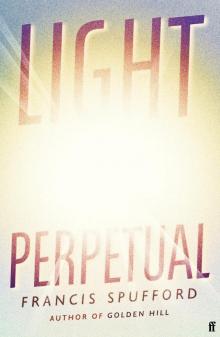 Light Perpetual
Light Perpetual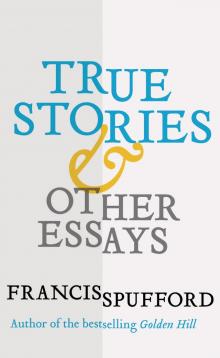 True Stories
True Stories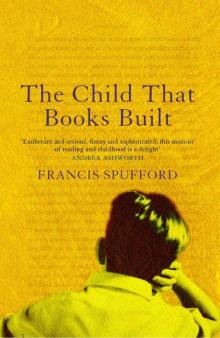 The Child that Books Built
The Child that Books Built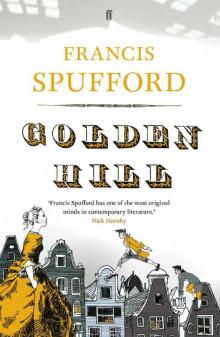 Golden Hill
Golden Hill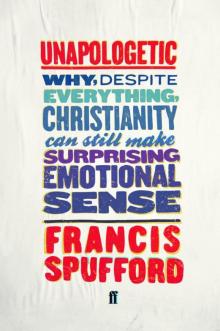 Unapologetic
Unapologetic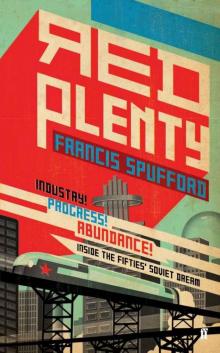 Red Plenty
Red Plenty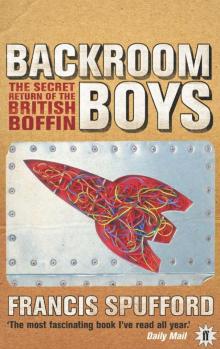 Backroom Boys
Backroom Boys